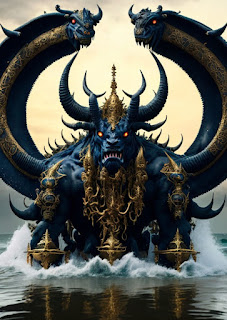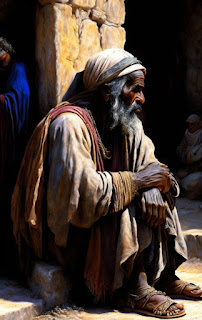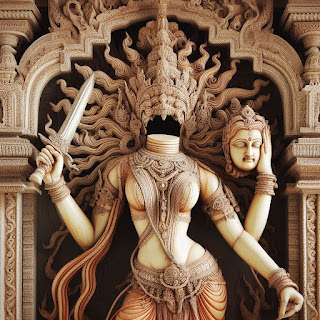On the Book of Revelation
Hey y’all. Today I'd like to take a closer look at the Book of Revelation, its history, authorship, message, and symbolism.
Regarding the origins and authorship of the Book of Revelation, there is a lot of scholarly disagreement. The book was allegedly written by a man named John, but it's unclear exactly who this John was. Some scholars claim that John the Apostle wrote the book, but others counter that it was another John, such as John the Elder or John of Patmos.
The book's vivid, frequently frightful imagery has captivated readers' imaginations for centuries. Symbolism abounds in the Book of Revelation's imagery, much of which is challenging to interpret. For instance, the number seven, which stands for completion and perfection, appears frequently throughout the book. Additionally significant is the number 12, which stands for both the twelve apostles of Jesus and the twelve tribes of Israel. The colors used in the book have symbolic meanings as well; red denotes bloodshed and war, while white stands for purity and triumph.
Animals are also used as symbols in the Book of Revelation. The eagle stands for transcendence and divinity, the lion for strength and power, and the lamb for Jesus. With the aid of these symbols, the book's message is more effectively and enduringly communicated.
Here are some of the more striking verses and imagery from the book:
"I saw a woman sitting on a scarlet beast that was covered with blasphemous names, and it had seven heads and ten horns." (Revelation 17:3)
This is one of the most famous images from the Book of Revelation. The woman represents Babylon, the great city that symbolizes all that is evil in the world. The scarlet beast with seven heads and ten horns represents the Roman Empire, which was seen as the embodiment of evil in the eyes of many early Christians.
"And I saw a beast rising out of the sea, with ten horns and seven heads, with ten diadems on its horns and blasphemous names on its heads." (Revelation 13:1)
This is another image of a beast with multiple heads and horns. This beast represents the Antichrist, a figure who will come at the end of the world and lead a rebellion against God.
"Then I saw heaven opened, and there was a white horse! Its rider is called Faithful and True, and in righteousness he judges and makes war." (Revelation 19:11)
This is an image of Jesus returning to earth at the end of time. He is riding a white horse, which represents purity and victory, and he is accompanied by an army of angels.
"And I saw the dead, great and small, standing before the throne, and books were opened. Also another book was opened, the book of life. And the dead were judged according to their works, as recorded in the books." (Revelation 20:12)
This is an image of the final judgment, when all people will be judged according to their deeds. The "book of life" represents those who will be saved, while the other books represent the deeds of the dead.
The Book of Revelation has been viewed differently by different religions. In Christianity, it is often seen as a work of prophecy that foretells the end of the world and the return of Jesus. However, some scholars argue that the book is actually a symbolic and allegorical work that speaks to spiritual truths rather than literal events.
The Book of Revelation was also nearly excluded from the Bible entirely. Its inclusion was hotly debated by early Christian communities, and some leaders felt that it was too controversial and should not be included in the canon. Ultimately, it was included, but its interpretation and significance continued to be a subject of debate for centuries.
So, has the prophecy of the Book of Revelation been fulfilled already, or is it yet to be fulfilled, or even if it is prophecy at all? These are questions that have been asked by many over the centuries, and the answer is not clear-cut. Some argue that the book's prophecies have already been fulfilled in historical events, such as the fall of the Roman Empire or the Protestant Reformation. Others believe that the book is still to be fulfilled, and that its prophecies will play out in the end times. And still, others argue that the book is not a work of prophecy at all, but rather a symbolic and allegorical work that speaks to spiritual truths.
Regardless of how one interprets the Book of Revelation, it is clear that it has had a significant impact on both religious and secular culture. Its imagery and symbolism have inspired countless works of art, literature, and music, and its message of hope and victory in the face of persecution has resonated with Christians for centuries.
In summary, the Book of Revelation is a complex and fascinating work that has captured the imagination of readers for centuries. Its vivid imagery and symbolism have inspired countless works of art, and its message of hope and encouragement continues to resonate with Christians today. While its interpretation and significance may continue to be debated, one thing is clear: the Book of Revelation is a powerful and enduring work that will continue to fascinate and inspire readers for generations to come.




Comments
Post a Comment